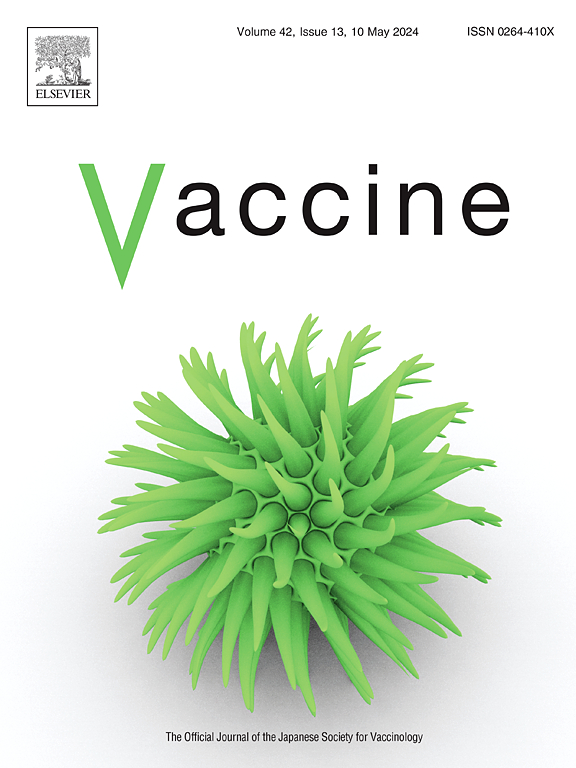Qualification of a reporter virus microneutralization assay for evaluation of influenza specific antibodies in human clinical trials
IF 4.5
3区 医学
Q2 IMMUNOLOGY
引用次数: 0
Abstract
Neutralizing antibodies can block the entry of viruses into host cells. Next-generation influenza vaccines should stimulate the production of high levels of neutralizing antibodies capable of preventing influenza infection or reducing the severity of disease. Currently, multiple assays and protocols are used to measure influenza neutralization and there is a critical need to compare antibody responses elicited by different candidate vaccines tested in different populations to advance the most promising vaccine candidates to efficacy studies and licensure. A standardized approach for safely testing human sera against influenza viruses is to employ replication restricted reporter influenza viruses in which an essential viral gene (i.e., polymerase basic 1, PB1, gene) is replaced with a reporter gene. The replication restricted reporter viruses can be propagated in specific cell lines expressing the deleted viral gene, which make them suitable for biosafety level 2 (BSL-2) laboratory. Qualification of this method is needed for standardized testing in human clinical trials.
In compliance with Good Clinical Laboratory Practice (GCLP) guidelines, we qualified a reporter virus microneutralization method by evaluating linearity, precision, accuracy, range, limits of detection and quantitation, specificity and robustness for A/New Caledonia/20/1999 (H1N1). We utilized unique sets of human clinical trial samples positive for influenza specific antibodies to enable development and testing. We compared the reporter virus microneutralization assay to the standard microneutralization assay with three additional viruses: A/California/07/2009 (H1N1), A/Singapore/INFIMH-16-0019/2016 (H3N2) and A/Texas/71/2017 (H3N2). The qualified reporter virus microneutralization assay was linear (R2 = 0.99, p-value <0.0001), precise (0–8 % GCV repeatability), accurate (%RE −18 to −12 %) with LLOQ of 19.4, robust for laboratory testing conditions (i.e. incubation times, temperature) and correlated with the traditional microneutralization assay (Spearman's r = 0.84–0.98, p < 0.001 for four virus strains). This qualified method will enable defining correlates of protection and contribute to meta-analyses of future human clinical trials.
在人类临床试验中评估流感特异性抗体的报告病毒微量中和试验的资格。
中和抗体可以阻止病毒进入宿主细胞。下一代流感疫苗应刺激产生能够预防流感感染或降低疾病严重程度的高水平中和抗体。目前,有多种检测方法和方案用于测量流感中和,迫切需要比较在不同人群中测试的不同候选疫苗引起的抗体反应,以推进最有希望的候选疫苗进行功效研究和许可。安全检测人血清抗流感病毒的一种标准化方法是使用复制受限的报告型流感病毒,其中一个基本病毒基因(即聚合酶碱性1基因,PB1,基因)被一个报告基因取代。复制受限报告病毒可在表达缺失病毒基因的特定细胞系中繁殖,适合生物安全二级(BSL-2)实验室使用。在人体临床试验的标准化测试中,需要对该方法进行鉴定。按照良好临床实验室规范(GCLP)指南,通过评价a/ New Caledonia/20/1999 (H1N1)报告病毒微量中和方法的线性度、精密度、准确度、范围、检出限和定量限、特异性和稳健性,对该方法进行了鉴定。我们利用流感特异性抗体阳性的独特的人体临床试验样本,使开发和测试成为可能。我们将报告病毒微量中和试验与标准微量中和试验进行了比较,并添加了三种病毒:A/California/07/2009 (H1N1)、A/Singapore/INFIMH-16-0019/2016 (H3N2)和A/Texas/71/2017 (H3N2)。合格的报告病毒微量中和试验呈线性(R2 = 0.99, p值)
本文章由计算机程序翻译,如有差异,请以英文原文为准。
求助全文
约1分钟内获得全文
求助全文
来源期刊

Vaccine
医学-免疫学
CiteScore
8.70
自引率
5.50%
发文量
992
审稿时长
131 days
期刊介绍:
Vaccine is unique in publishing the highest quality science across all disciplines relevant to the field of vaccinology - all original article submissions across basic and clinical research, vaccine manufacturing, history, public policy, behavioral science and ethics, social sciences, safety, and many other related areas are welcomed. The submission categories as given in the Guide for Authors indicate where we receive the most papers. Papers outside these major areas are also welcome and authors are encouraged to contact us with specific questions.
 求助内容:
求助内容: 应助结果提醒方式:
应助结果提醒方式:


